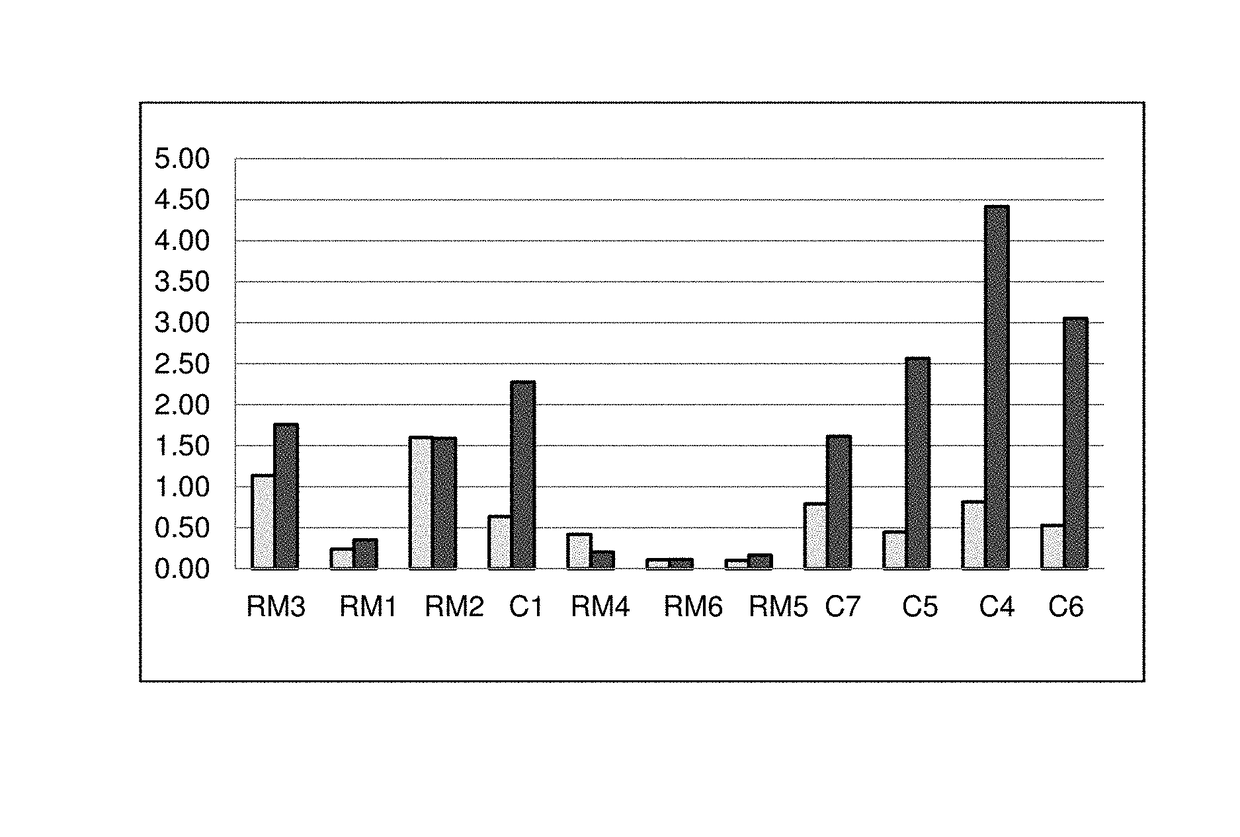Reactive mesogens
a mesogen and reactive technology, applied in the field of reactive mesogens, can solve problems such as difficult utilisation in many optical applications
- Summary
- Abstract
- Description
- Claims
- Application Information
AI Technical Summary
Benefits of technology
Problems solved by technology
Method used
Image
Examples
example 1
[0186]Compound (RM1) was prepared as described below.
[0187]
Stage 1
[0188]
[0189]4-Bromo-3-fluoroiodobenzene (200 g, 0.665 mol), 4-methoxybenzeneboronic acid (100.8 g, 0.663 mol), dioxane (1.21), water (600 ml) and potassium phosphate (320 g, 1.51 mol) were ultrasonicated for 30 minutes. [1,1-Bis(diphenylphosphino)ferrocene]dichloropalladium(II) (6.4 g, 8.74 mmol) was added and the mixture heated to 40° C. and held for 2.5 hours. The mixture was cooled, the two layers were separated and the solvent from the organic layer removed in vacuo. The residue was purified by column chromatography eluting with petrol 40-60° C.:DCM 4:1 then petrol 40-60° C.:DCM 3:1. The fractions containing the product were combined and the solvent removed in vacuo. The solid was triturated with petrol 40-60° C. to give the desired product (131.05 g, 70% yield).
Stage 2
[0190]
[0191]4-Bromo-3-fluoro-4′-methoxy-bipheny (90 g, 0.320 mol), 4-cyanophenylboronic acid (51.75 g, 0.352 mol), dioxane (550 ml), water (275 ml)...
example 2
[0198]Compound (RM2) was prepared as described below.
[0199]
Stage 1
[0200]
[0201]4-Bromo-2-fluoroiodobenzene (72.2 g, 240 mmol), 4-cyanobenzeneboronic acid (35.2 g, 240 mmol), dimethoxyethane (300 ml), water (150 ml) and potassium carbonate (50 g, 362 mmol) were ultrasonicated for 15 minutes. [1,1-Bis(diphenylphosphino)ferrocene]dichloropalladium(II) (1.2 g, 1.7 mmol) was added and the mixture heated to 80° C. for 2.5 hours and a further 17 hours at 60° C. The mixture was cooled, water (360 ml) was added and the mixture acidified cautiously with concentrated HCl (60 ml). The two layers were separated and the aqueous layer extracted with MTBE (1000 ml and 2×200 ml). The combined organic extracts were dried over anhydrous sodium sulphate, filtered and the solvent from the filtrate removed in vacuo. The residue was purified by vacuum flash chromatography eluting with toluene / heptane 1:1. The fractions containing the product were combined and the solvent removed in vacuo to give the desire...
examples 3-8
[0210]The following compounds were prepared in analogy to the synthesis described in Examples 1 and 2.
[0211]
LCNo.StructurephaseRM3K 99.8 N 148 IRM4K 144.9 IRM5K 97.2 N 209 IRM6K 88.5 N 217.3 IRM7K 160.5 IRM8K 148 N 177I
PUM
 Login to View More
Login to View More Abstract
Description
Claims
Application Information
 Login to View More
Login to View More - R&D
- Intellectual Property
- Life Sciences
- Materials
- Tech Scout
- Unparalleled Data Quality
- Higher Quality Content
- 60% Fewer Hallucinations
Browse by: Latest US Patents, China's latest patents, Technical Efficacy Thesaurus, Application Domain, Technology Topic, Popular Technical Reports.
© 2025 PatSnap. All rights reserved.Legal|Privacy policy|Modern Slavery Act Transparency Statement|Sitemap|About US| Contact US: help@patsnap.com



